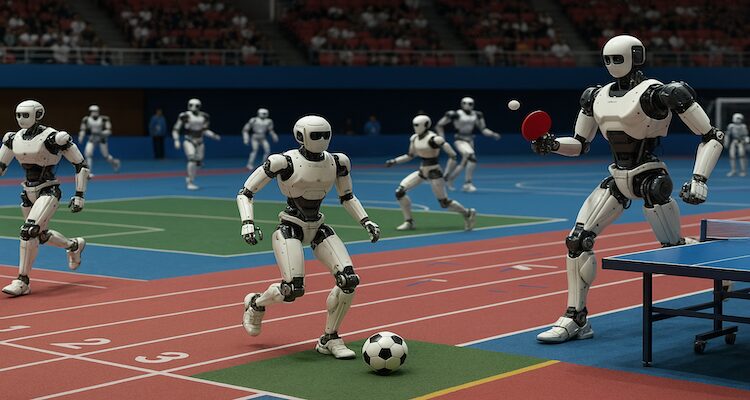China Stages Global Humanoid Robot Games to Showcase AI Power
Beijing hosts the World Humanoid Robot Games, drawing 280 teams from 16 nations to compete in sports and tech challenges, highlighting China’s AI ambitions.
A Sporting Arena for the Future of AI
Beijing has transformed into a global stage for humanoid robotics as China launched the World Humanoid Robot Games, a three-day event designed to spotlight the nation’s rapid progress in artificial intelligence and automation. With 280 teams from 16 countries, the competition is set to test both athletic skill and cutting-edge technology.
From football matches to table tennis duels, and even track-and-field contests, humanoid robots are stepping into the sporting arena. But the games go beyond athletics—robots will also face real-world skill trials, such as sorting medicines, handling materials, and performing cleaning tasks.
Global Talent Meets China’s Robotics Drive
Teams have flown in from across the globe, including the United States, Germany, and Brazil. Among them, 192 teams represent universities, while 88 come from private tech enterprises. Homegrown robotics firms, such as Unitree and Fourier, are putting their humanoid innovations to the test.
The event’s organization by the Beijing municipal government underscores China’s growing emphasis on robotics as part of its broader economic and technological strategy. As the country faces an aging population and slowing economic growth, authorities see automation as a critical tool for sustaining productivity and global competitiveness.
Billions Invested in AI Ambitions
China’s push in robotics has been nothing short of aggressive. Over the past year, government subsidies for the sector have exceeded $20 billion, and Beijing is preparing a one trillion yuan ($137 billion) fund to nurture AI and robotics startups.
This competition is just one in a string of high-profile events. Earlier this year, Beijing hosted the world’s first humanoid robot marathon, as well as an international robotics conference and the opening of retail outlets dedicated to humanoid machines.
Glitches, Questions, and the Road Ahead
Not all showcases have gone smoothly. The marathon drew attention for some less-than-perfect performances—several robots emitted smoke mid-race, while others failed to cross the finish line. These mishaps have fueled skepticism about how far the technology has really come.
However, for engineers and industry watchers, such events are more than public spectacles—they are vital testing grounds for refining humanoid capabilities.
Industry Voices on the Future of Humanoids
In a recent report, Morgan Stanley analysts pointed to a surge in public attendance at robotics conferences, noting it reflects how deeply the concept of “embodied intelligence” has resonated beyond policymakers.
“This broad public interest could be pivotal to China’s leadership in humanoid robotics, ensuring the talent, funding, and user demand needed for long-term growth,” the report stated.
For Booster Robotics, whose machines are representing Tsinghua University in the football competition, the sport is more than a game—it’s a technological boot camp.
“Football challenges our robots’ perception, decision-making, and control systems,” explained Zhao Mingguo, the company’s chief scientist. “The lessons we learn here can translate into applications in homes and factories.”
Why These Games Matter
While some critics dismiss the World Humanoid Robot Games as flashy PR, the broader implications are significant. The competition is building public interest, fostering global collaboration, and pushing technological boundaries—crucial factors if humanoid robots are to move from the lab into everyday life.
With massive government backing and a growing pool of innovators, China is positioning itself at the forefront of humanoid development. Whether these robots end up dominating factory floors, assisting in hospitals, or one day serving in households, events like these may mark the early steps of a technological shift with global impact.
Source: (Reuters)











